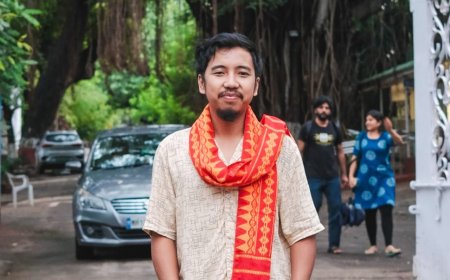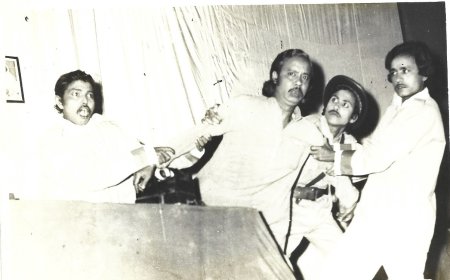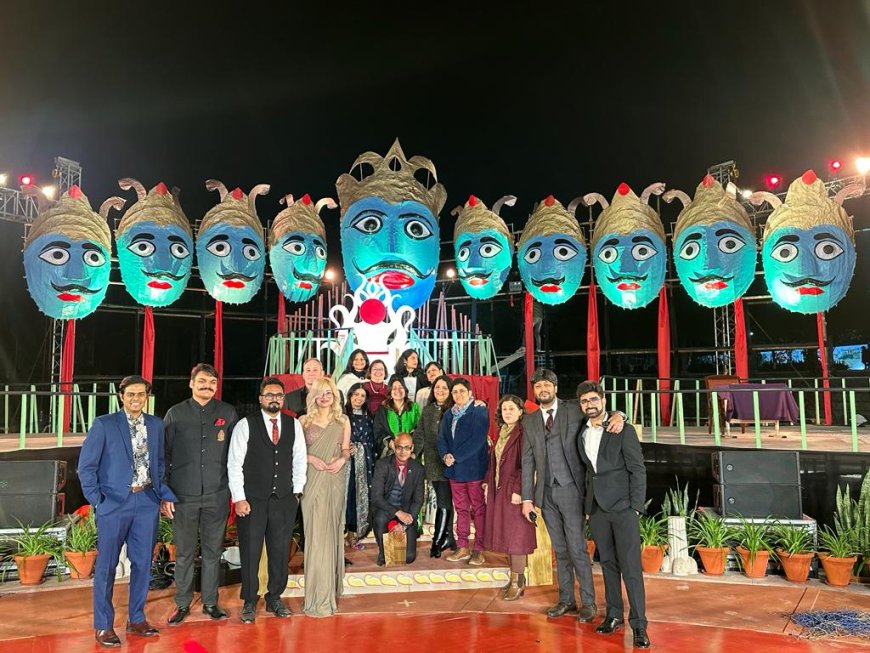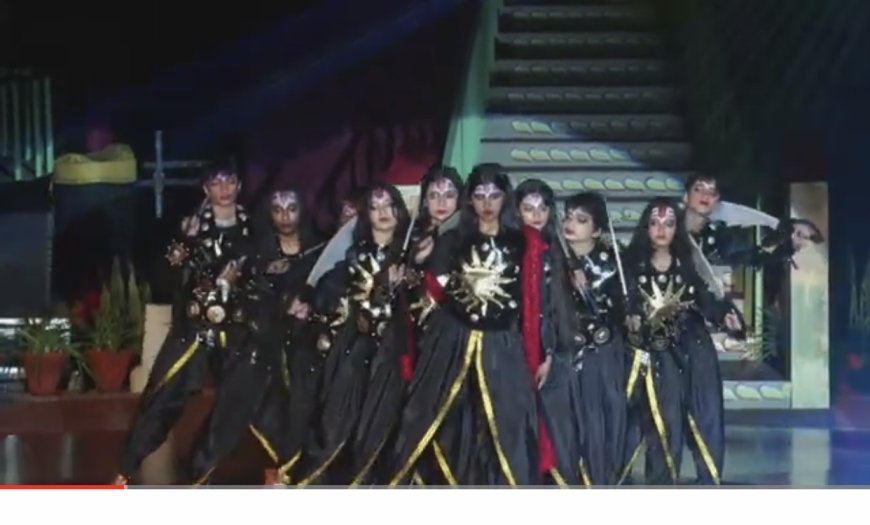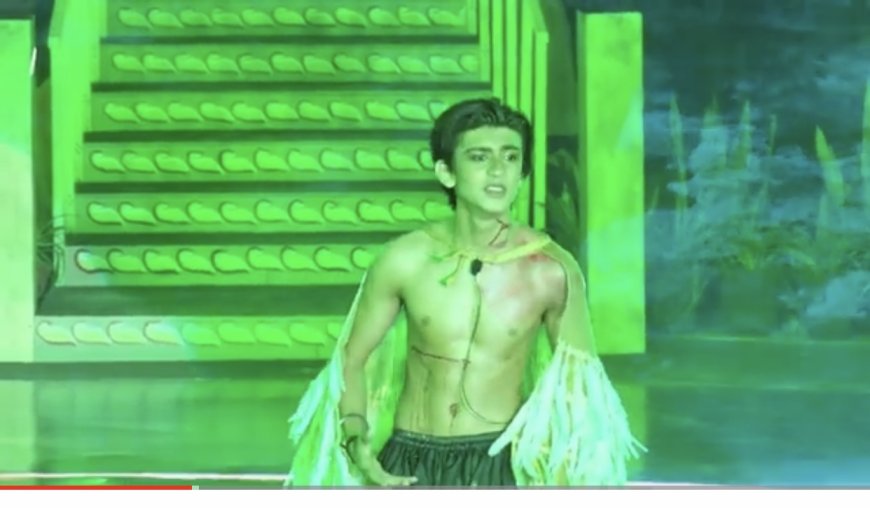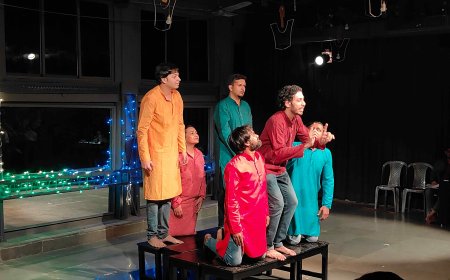DASHAANAN – A SCINTILLATING PERFORMANCE BY STUDENTS OF PATHWAYS WORLD SCHOOL IN GURUGRAM
Dr. Shoma A. Chatterji provides a insightful review on DASHAANAN, a play performed by 300 students of the Pathways World School in Gurugram near the Aravalli range
Amidst the loud music, firecrackers, colours, sound and fury in and around Rama and the installation of Lord Rama at the new and grand temple in Ayodhya, we have almost forgotten the existence of Raavan also known as Dashaanan. This is a bit strange considering that Rama’s place in history is partly rooted in his destruction of Raavan, the erstwhile King of Sri Lanka who, otherwise, is known to be a great warrior, an ardent devotee of Lord Shiva and a a true hero in every sense.
Ravana was a title later taken on by Dashānana, and it means "the one with ten (dasha) faces (anana)". Further, roravana is Sanskrit for "loud roaring." In Abhinava Gupta's Krama Shaiva scripture, yāsām rāvanam is used as an expression to mean people who are truly aware of the materialism of their environment.
Ravana is depicted and described as having ten heads, although he is sometimes shown with only nine heads since he cut one off to convince Shiva. He is described as a devout follower of Shiva, a great scholar, a capable ruler, and a maestro of the Veena. Ravana is also depicted as the author of the Ravana Samhita, a book on Hindu astrology, and the Arka Prakasham, a book on Siddha medicine and treatment. Ravana possessed thorough knowledge of Siddha and political science. He is said to have possessed the nectar of immortality, which was stored inside his belly thanks to a celestial boon from Brahma.
Ravana was born to the great sage Vishrava and princess Kaikesi. He was a Brahmin with profound knowledge of the four Vedas and the six Shastras. Each of Ravana’s ten heads symbolizes a different aspect of desire, such as greed, anger, lust, attachment, pride, etc. He was known to surrender one of these desires to Lord Shiva every year. Ravana was an ardent devotee of Lord Shiva. He performed intense penance, even going to the extent of cutting off his own heads to please Shiva. Pleased by his devotion, Shiva considered Ravana as one of his greatest devotees. Ravana was extremely wise, powerful, and proud. His major goal was to dominate the devas (gods) and gain full control over the entire Universe. It is believed that Ravana had a Nectar of Immortality, which he carefully stored within his belly. This was a boon he had received from Lord Brahma, the creator of the Universe.
Arun Kukreja wrote a book entited Dashaanan, a one-act play but the book is no longer in print. It is described as a “Fevered, rich, imaginative soliloquy which was published by Roopa in 2004.This pours out of the magnificent Raavan. Dashaanan is an interesting treatment of the concept of the anti-hero who is in every way equal to the gods but is somehow cheated of the status by destiny. Dashaanan has been compared to Shakespeare’s Julius Caesar and Milton’s Paradise Lost. The one-act play explores the legend of the demon king Ravana from a unique perspective . The play is a soliloquy by Ravana, and it attempts to highlight the concept of an antihero - a Mahanayak who is in no way lesser than the gods but somehow is cheated by destiny from getting that status The play has been translated from the original Hindi by Neera Kukreja Sohoni . Another book authored by Sulabh Agnihotri of the same name was published in 2018.
Tathagata Chowdhury, playwright, director, trainer in drama and films for students of Pathways World School, recently conceived of a play called Dashaanan to celebrate their annual day function on December 16 2023. He not only guided the children in directing them with other teachers of the school, but he also composed and created the magical lighting for the play held in the open air auditorium of the school’s spacious complex in the midst of the picturesque Aravalli Hills. Incidentally, Chowdhury is also the founder-director of an English theatre group in Kolkata called Theatrecian which completes 22 years this year.
Asked what motivated him to write this unique play, Chowdhury says, “We have some preconceived notions about characters like The Joker in Batman and Shylock in The Merchant Of Venice. We have definite stereotypical ideas of the arch type villain. In Dashaanan I have tried to revisit the ten heads of Raavan. It is a play that focusses on the need to tame the emotions which have the potential to be destructive. There is a need to awaken the Rama within us and destroy each of the ten heads.”
The ten heads are more symbolic of the evils that are vested in humanity even in the form of a God or a Demon than physically concrete realities. So, instead of destroying Raavana at one stroke, the play shows how the ten heads are destroyed one after the other till, in the end, Rama kills Raavana when Raavana is dying with the lone central head. Rama commands Lakshmana to bow down to Raavana who was a brave warrior king with values befitting a hero. The ten heads represent Kama (Lust), Krodh (Anger), Moha (Delusion), Lobha (Greed), Mada (Pride), Matsarya (Envy), Buddhi (Intellect), Manas (Mind), Chitta (Will), and Ahankara (Ego).
Around 300 students participated directly in the performance through acting, dancing, singing, playing musical instruments, carrying heavy costumes with elan and perfection and even anchoring before and after the performance. There were 30 characters featured in the play. The rehearsals took one full month with 15 days of intensive practice. The students who participated were somewhere between 12 and 17 years of age guided, trained and supervised by their teachers in dance and choreography, costume designing and draping, make-up, music, singing, reciting, anchoring and so on.
Why Dashaanan in an English medium school which is filled with elitist parents and children while the Ramayana in written in Indian languages later translated into English? Says Chowdhury, “The school director Ms. Sonya Mehta believed that our students studying the International Baccalaureate curriculum should also know about their cultural roots. We performed Ramayan about decade back though I was not in the vicinity of Pathways, then. I have the urge to explore 'possibilities' and other alternatives in a script. I thought of staging Ramayana from Raavan's perspective. There is constant debate between a teacher and a student in this play. They share and debate views and perspectives concerning modern existence.” Adds Mrs. Mehta, “At Pathways World School, Gurgaon- we have a motto- Learn, Work, Play, Think, Live. We had regular classes and ensured that preparation for the play doesn't interfere with academics.”
The play takes the audience on a mesmerizing, two-hour-long journey into the mythological realm, delving into the ten symbolic heads, each representing facets of human nature. The production featured vivid storytelling, enchanting performances, and profound symbolism that transcends time and is universal in appeal, in instilling positive values and in honoring and respecting characters deemed to be ‘negative’ but not really so.
The play would not have achieved the standards of excellence without the creative and directorial contributions of (a) Geoffrey Williams (Music), (b) Norbu Tshring (Dance) and (c) Kirandeep Manocha (Lights,Design, and co-direction).
The proscenium space was tiered in several layers on all three sides, while the viewing space was like a stadium, placed on a higher level from the performing space. This invested the play with a three-dimensional impact enhanced by the magical light effects created and designed by Tathagata Chowdhury. The two-hour long performance did not allow for breaks or pauses and the students’ energy was electrically charged, creating a beautiful blend of the real, the surreal and the magical.
*****
What's Your Reaction?




































